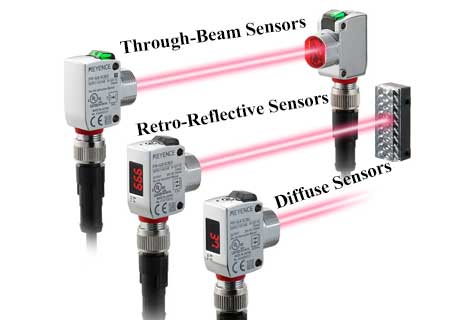What is the Maximum Range of a Photoelectric Sensor?
Key Takeaway
The maximum range of a photoelectric sensor varies by type; diffuse can detect up to 1 meter, retro-reflective up to 10 meters, and through-beam sensors can detect up to 100 meters or more, depending on conditions and model.
Understanding Photoelectric Sensor Technology
Understanding the maximum range of photoelectric sensors is crucial when integrating these devices into industrial automation systems. Their range determines how far away they can effectively detect objects, which is pivotal in designing systems that are both efficient and reliable.
Photoelectric sensors operate by emitting a light beam to detect the presence, absence, or distance of objects. The range of these sensors can vary significantly depending on their design and the environmental conditions they are used in. They are commonly employed in manufacturing and packaging processes where precise object detection is necessary to maintain workflow integrity.

Factors Influencing Maximum Range
Several factors can affect the maximum range of a photoelectric sensor. The type of sensor—whether it is diffuse, retro-reflective, or through-beam—plays a significant role. Diffuse sensors have the shortest range, often limited to a meter or less, as they rely on the reflection of light from the object itself. Retro-reflective sensors can reach up to 10 meters by reflecting light off a dedicated reflector, while through-beam sensors achieve the longest range, up to 100 meters, as they detect light passing directly between the emitter and receiver.
Environmental conditions such as lighting, atmospheric dust, and moisture can also impact sensor range. Optimal placement and regular maintenance are necessary to mitigate these effects and ensure consistent performance.
Typical Range Values for Different Types of Sensors
To select the right sensor for a specific application, it’s important to understand the typical range values associated with each type of photoelectric sensor. For instance, diffuse sensors are suitable for close proximity tasks. In contrast, through-beam sensors are ideal for long-distance applications, such as in large warehouses or outdoor settings where extensive reach is required.
Extending Sensor Range: Tips and Techniques
Maximizing the range of your photoelectric sensors involves several strategies. Using lenses or reflectors can focus or amplify the light beam, extending its effective range. Additionally, choosing sensors with adjustable sensitivity can help fine-tune the detection capabilities to suit specific operational needs. Regular cleaning and calibration also play critical roles in maintaining optimal range over time.
Limitations of Sensor Range in Practical Applications
The practical applications of photoelectric sensors, while increasingly sophisticated, still encounter range limitations that can significantly impact system design and operational effectiveness. These limitations are particularly critical in environments where precision and reliability are paramount. For instance, in automated material handling systems, sensors must accurately detect objects at various distances to coordinate machinery actions smoothly. If a sensor’s range is too short or its sensitivity too low, it may fail to detect objects correctly, leading to errors in the handling process, potential equipment damage, or downtime.
Moreover, environmental factors such as ambient lighting, atmospheric conditions, and the presence of obstructive particles (like dust or vapor) can further restrict the effective range of these sensors. In manufacturing processes involving fine, intricate tasks, even minor inaccuracies in sensor readings can cause significant product quality issues, resulting in waste and increased operational costs.
To overcome these challenges, it’s crucial to select the right type of sensor for each application, considering both the maximum range and the environmental conditions of the installation site. Integrating supplementary technology such as amplifiers or reflectors can also enhance sensor performance. By understanding and mitigating the range limitations of photoelectric sensors, businesses can optimize their automation systems for better precision and efficiency.
Conclusion
The maximum range of photoelectric sensors is a fundamental characteristic that affects their applicability in various industrial scenarios. By comprehensively understanding the capabilities and limitations of different types of sensors, industries can better design systems that leverage these devices’ strengths. Ensuring the selection of the appropriate sensor type, considering environmental impacts, and employing range-extending techniques are all crucial steps in utilizing photoelectric sensors effectively, thus enhancing overall system efficiency and reliability.
